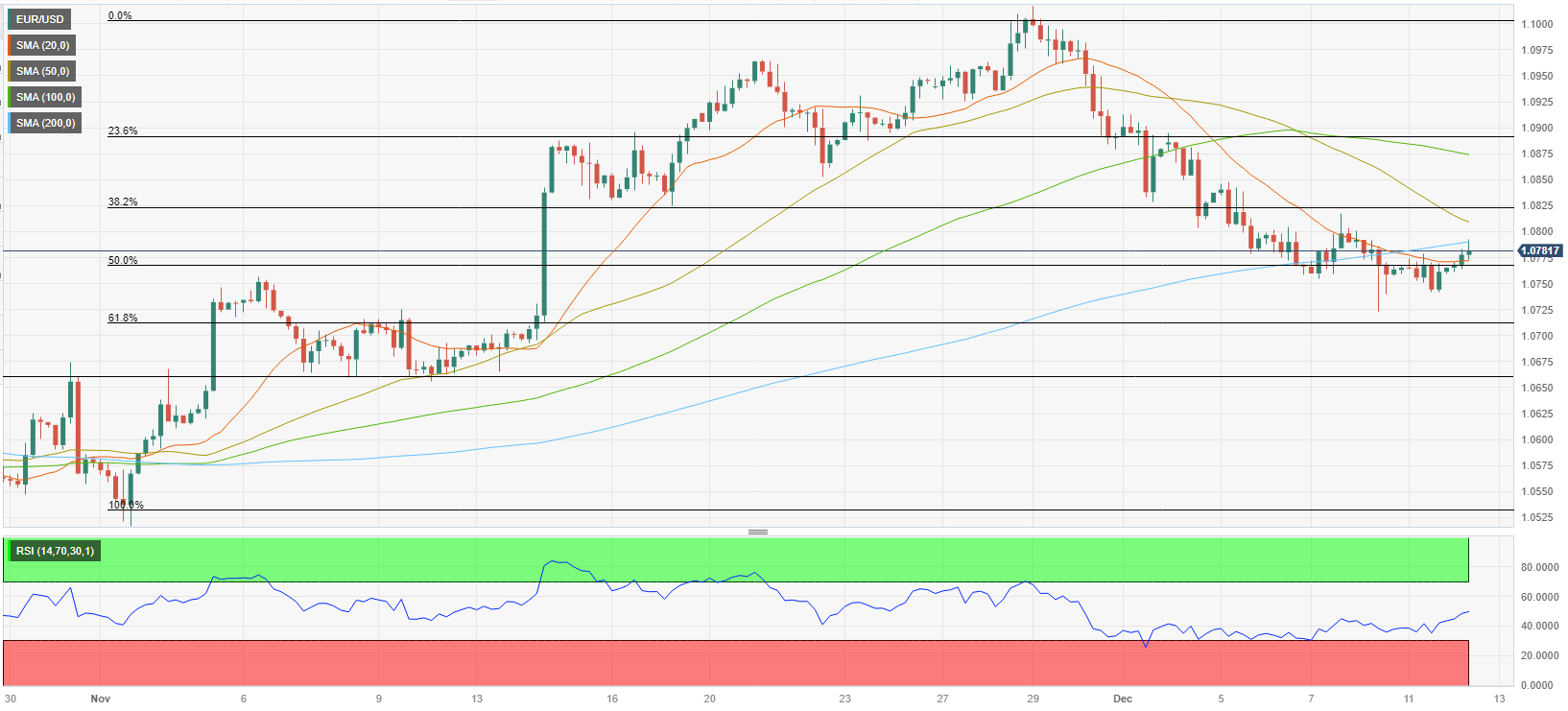- EUR/USD gained traction and rose toward 1.0800 early Tuesday.
- The US Dollar struggles to find demand amid retreating US yields.
- Annual core inflation in the US is forecast to hold steady at 4% in November.
Following a bearish start to the week, EUR/USD managed to find a foothold in the American trading hours and closed the day virtually unchanged on Monday. The pair gained traction and advanced toward 1.0800 early Tuesday amid retreating US yields but investors could refrain from betting on further US Dollar (USD) weakness ahead of the highly-anticipated November inflation report.
In the absence of high-tier data releases, the relatively upbeat market mood made it difficult for the USD to continue to gather strength late Monday. Meanwhile, the high-yield at the latest 10-year US Treasury note auction came in at 4.29%, down from 4.51% in the previous auction, and caused US T-bond yields to edge lower, putting additional weight on the USD’s shoulders.
Later in the day, the US Bureau of Labor Statistics will release the Consumer Price Index (CPI) data for November. On a yearly basis, the CPI is forecast to rise 3.1%, at a slightly softer pace than the 3.2% increase recorded in October. The Core CPI, which excludes volatile food and energy prices, is expected to match the previous print by rising 4%. On a monthly basis, the CPI and the Core CPI are seen increasing by 0.1% and 0.3%, respectively.
In case the monthly Core CPI print comes in below the market expectation, the initial reaction could cause the USD to weaken further. On the other hand, a stronger-than-forecast increase in this data could have the opposite impact on the currency’s valuation.
On Wednesday, the Federal Reserve (Fed) will announce monetary policy decisions and release the revised Summary of Economic Projections (SEP). A soft inflation report could attract dovish Fed bets.
EUR/USD Technical Analysis


The Relative Strength Index edged higher to 50 on the 4-hour chart, reflecting a loss of bearish momentum. On the upside, the pair faces stiff resistance at 1.0820 (200-day Simple Moving Average (SMA), Fibonacci 38.2% retracement of the latest uptrend). A daily close above this level could open the door for additional gains toward 1.0870 (100-period SMA on the 4-hour chart) and 1.0900 (psychological level, Fibonacci 23.6% retracement).
1.0750 (100-day SMA) aligns as critical support. A hot US inflation in November could trigger another leg lower in EUR/USD. If sellers flip this level into resistance, 1.0700 (Fibonacci 61.8% retracement, psychological level) could be seen as the next bearish target before 1.0660 (static level).




